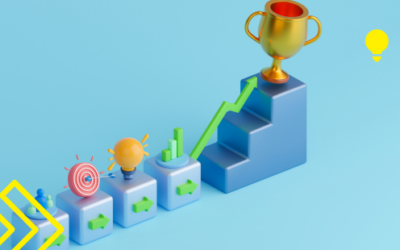14 August 2023

Introduction to Life Design
Welcome to the world of designing your ideal life with the Life Design Method! This method is not just any framework, but rather, an approach to life that helps you pinpoint what you truly want and how to achieve it. Life Design Method involves using the design thinking framework to create a step-by-step plan to achieve your ideal life.
It is important because it helps you move beyond just imagining your ideal life and into actually creating it. It takes into account your values, desires, and goals, and guides you towards achieving them. Think of it as designing a house: you wouldn’t just begin building without a plan, nor would you build a house that doesn’t suit your needs. In much the same way, Life Design Method helps you build a life that fits the unique design you have in mind.
This method is different from other traditional goal-setting approaches because it doesn’t stop at simply setting goals. It takes a deeper dive into exploring what motivates you, how you can push yourself out of your comfort zone, and how you can turn your dreams into actionable steps. So why settle for less when you can design the life you’ve always wanted? Let’s dive into how the Life Design Method works, step by step.
Understanding the Design Thinking Framework
Are you looking to take control of your life and design it according to your own terms? If the answer is yes, then you’ve come to the right place! The Life Design Method is a powerful framework that makes use of the design thinking process to help you create a life that you’ll love.
But what exactly is the Design Thinking Framework, and how can it be applied to life design? At its core, the Design Thinking Framework is a problem-solving approach that starts with the user and focuses on developing empathy for their needs. It relies heavily on iteration and experimentation to arrive at a solution that not only meets the user’s needs but exceeds their expectations.
When it comes to Life Design, the Design Thinking Framework can be extremely helpful in creating a personalized roadmap that aligns with your values, interests, and goals. It starts with identifying and understanding your personal vision for your life and then breaks down that vision into achievable milestones. This process not only gives you a clearer picture of what you want to do but also helps you figure out how you’re going to get there.
The Design Thinking Framework is also a great tool for experimentation when trying out new things or pushing yourself out of your comfort zone. It encourages you to take risks and learn from your failures, which are essential ingredients in the recipe for success.
So, if you’re ready to take the reins and start designing your ideal life, the Life Design Method is the perfect place to start. It’s a framework that rewards creativity, experimentation, and perseverance. As you embark on this journey, always remember that you are the architect of your own destiny, and anything is possible with the right tools and mindset.
Identifying Your Life Design Vision
Before embarking on any journey, it’s important to have a clear picture of the destination. In the context of Life Design Method, this means identifying your personal vision for the future. Why is having a vision important, you ask? Well, without a destination in mind, you could end up going in circles or getting sidetracked by distractions along the way. It’s like setting out on a road trip without a map or GPS – you might eventually reach your destination, but it’ll take longer and be more stressful than if you had planned your route.
So, how do you identify your personal vision? The first step is to dig deep and think about what truly matters to you. What are your values, passions, and goals? What brings meaning and fulfillment to your life? Don’t be afraid to dream big and think outside the box – this is your vision, after all!
Once you have a rough idea of what your vision looks like, it’s time to get more specific. Some tools that can help with this include vision boards, journaling, or simply talking through your ideas with a trusted friend or mentor. The key is to get your vision out of your head and onto paper – or screen – so that it becomes more tangible and concrete.
Of course, identifying your vision is only the first step – next, you’ll need to map out the journey to get there. This will involve breaking your vision down into smaller, achievable milestones, and setting clear goals for each one. You’ll also want to think about potential obstacles or challenges along the way, and come up with strategies for overcoming them.
Your vision and goals may evolve over time – that’s okay! The Life Design Method is all about staying flexible and adaptable, and being willing to pivot or adjust your course as needed. The important thing is to keep your vision in mind as a guiding star, and to stay focused – and motivated – on working towards it. So, go ahead – start dreaming, planning, and designing your ideal life. With Life Design Method, the sky’s the limit!
Mapping Your Life Design Journey
Now that you have identified your vision, it’s time to map out your journey towards achieving it. This involves breaking down your vision into smaller, achievable milestones, setting goals and tracking your progress. Think of your vision as the destination on a road trip. If you don’t map out your route and plot stops along the way, you risk getting lost or becoming discouraged.
By breaking down your vision into small, achievable milestones, you can create a roadmap for success. Setting achievable goals is a crucial part of this process. Your goals should be specific, measurable, attainable, relevant, and time-bound. In other words, they should be SMART goals. By setting SMART goals and tracking your progress, you’ll have a better understanding of how far you’ve come and how far you have left to go.
Tracking progress is also important because it allows you to celebrate your successes and identify areas where you need to improve. You can use a planner, a journal, or a habit tracker to record your progress. Remember, progress is not always linear, and setbacks are a natural part of any journey. It’s essential to learn from your failures and use them as an opportunity to grow and improve.
Keep in mind that your journey may not be perfect, and that’s okay. However, by breaking down your vision into milestones, setting achievable goals, and tracking your progress, you’ll be better equipped to overcome obstacles and stay motivated along the way. In the next section, we’ll discuss how to experiment with new ideas and push yourself out of your comfort zone, all while staying accountable to your vision. So, sit tight and get ready for an adventure!
Experimentation – Prototyping in Life Design
Experimentation is all about trying out new things, pushing yourself out of your comfort zone, and learning from failures. It’s important to remember that the design thinking framework isn’t a one-time thing. You need to continuously test and iterate on your vision to make sure it’s still aligned with your goals and values.
To start experimenting, think about small changes you can make in your daily routine. It could be taking a different route to work, trying a new coffee shop, or even something as simple as listening to a new genre of music. The point is to get comfortable with stepping out of your comfort zone and embracing new experiences. Of course, not everything will work out as planned. Some things might even fail miserably. But that’s okay!
Failure is a natural part of the experimentation process. It’s an opportunity to learn and grow so that you can make better decisions in the future. So, when something doesn’t go as planned, take the time to reflect on what happened. What went wrong? What could you have done differently? Use this experience to inform future decisions and keep moving forward.
Experimentation is also an opportunity to identify new goals and milestones that align with your vision. As you try out new things and learn more about yourself, you may discover new passions or interests. Use these discoveries to refine your vision and make sure it’s still leading you towards your ideal life.
Ultimately, experimentation is a chance to take ownership of your life design and make it your own. Don’t be afraid to challenge yourself and try new things. It’s the only way to grow and discover what truly makes you happy and fulfilled.
Implementation – Taking Action and Moving Forward
Implementation is where the magic happens. It’s time to take action on the plan you’ve created by turning your design vision into a reality. First and foremost, it’s crucial to stay accountable. After all, no one else can make your life design a reality except you.
One effective way to ensure accountability is by seeking an accountability partner, someone who is as committed to their life design as you are. This way, you can help each other stay on track. Moreover, creating habits for success is essential for implementing your life design. Start by setting small achievable goals and developing daily routines that support your vision.
Remember that long-term change does not happen overnight, but through consistent daily efforts. It’s easy to get caught up in the excitement of chasing your dreams, but it’s equally important to stay grounded in reality. It’s recommended to break down your plan into smaller milestones. This way, you can track your progress and make adjustments as needed. Life design is a continuous process of refining your vision and making tweaks along the way, depending on what works and what doesn’t. Don’t be afraid to pivot when necessary.
Lastly, celebrate your successes, no matter how small. Acknowledge your progress, and give yourself permission to take breaks when needed. Remember that life design is not just about achieving your end goal; it’s also about the journey towards becoming your best self. Now that you have the tools to bring your life design into fruition, it’s time to take action. Implement the steps you’ve learned today, stay accountable, create habits for success, and celebrate your wins. Remember, there is no perfect formula for life design. It’s all about experimenting with what works for you, staying flexible, and embracing the journey. Let’s get started!
Overcoming Obstacles – Beat the Roadblocks
The Life Design Method may seem like an exciting journey towards your ideal life, but let’s be real, it’s not going to be a smooth ride. You are going to encounter a variety of obstacles along your way, and that’s where the real strength lies – in overcoming them.
Identifying common obstacles is crucial to moving forward. Fear of failure, lack of motivation, imposter syndrome, and limited resources are a few of the most common challenges you’ll face. It’s essential to understand them clearly and know that you are not alone in this. Strategies to overcome these obstacles require creativity and resilience. Schedule your obstacles and challenges much like you would any other task. Block time out in your calendar to research and brainstorm solutions. Reach out to your support system, including friends and family, to discuss the challenge and help you navigate through it. Mindset shifts play a crucial role in overcoming obstacles. You need to shift your thinking from one that is limiting, to one that empowers you. Change the narrative from, “I can’t do it,” to “I can do it,” and with enough time and hard work, you will. Remember, real growth and success only come through overcoming obstacles, and with every hurdle, you become stronger and more resilient. Maintaining a positive attitude and mindset will allow you to overcome any obstacle that comes your way. Keep striving for greatness, keep pushing yourself, and keep overcoming obstacles. Your ideal life is possible with the Life Design Method, and nothing can stop you from achieving it.
Maintaining Life Design Momentum
Okay, designing your ideal life is great, but how do you keep the momentum going in the long run? It’s easy to get excited about your vision and goals in the beginning, but staying motivated through tough times is where the real work comes in. One key to maintaining momentum is celebrating your successes along the way. Big or small, every win deserves recognition.
So often, we’re quick to move onto the next thing without taking a moment to appreciate how far we’ve come. Celebrating your successes not only gives you a boost of motivation but also reinforces the positive habits and actions that got you there.
Another strategy for staying on track is to focus on the long-term game. It’s easy to get discouraged by setbacks or roadblocks along the way, but remember that these things are temporary. Keeping your end goal in mind can help you push through tough times and stay committed to your vision. Plus, breaking your goals down into smaller milestones can make the journey feel more manageable and rewarding.
Finally, accountability is key to staying on track. Whether it’s finding a mentor or an accountability buddy, having someone to check in with can give you the push you need to keep going. Building habits that support your goals can also help make them feel more automatic and less effortful over time. Life design isn’t a one-time event – it’s a continuous process that requires commitment and effort. But with the right mindset and strategies, you can design a life that aligns with your values and fills you with purpose. So keep striving, celebrating, and pushing forward – your ideal life is waiting for you.
Conclusion
Now that you’ve got a clear understanding of Life Design Method, it’s time to put it into practice. Remember, the ultimate goal isn’t just to design your ideal life, but to actually implement it. Take the time to identify your personal vision, map out your journey, experiment with new things, and hold yourself accountable. Obstacles will come, but with the right mindset and strategies, you can overcome them and continue to maintain your momentum. You’ve got this! Start taking action today and design the life you truly deserve.
Cheers.
Related Articles
Manifest Your Dream Life: A Guide to Crafting an Inspiring Life Vision
Crafting your life vision is more than dreaming—it’s a deliberate act of shaping your future. Explore key elements like identifying life areas, creating vision boards, and establishing a central theme. Embrace this journey to live with clarity and purpose.
The Superhero Complex: Balancing Helping Others with Self-Care
Unveil the superhero complex: a double-edged sword of boundless compassion and self-neglect. Learn how to balance altruism with self-care, navigating the fine line between heroism and burnout. Discover practical tips for cultivating resilience while championing others.
Arrival Fallacy: Why Goal-Based Happiness Does not Work
Explore the perils of goal-based happiness, delving into the Arrival Fallacy. Uncover why chasing goals may fall short in providing lasting joy. Rethink your approach, break free from illusions, and embark on a journey towards authentic, sustainable fulfillment.




